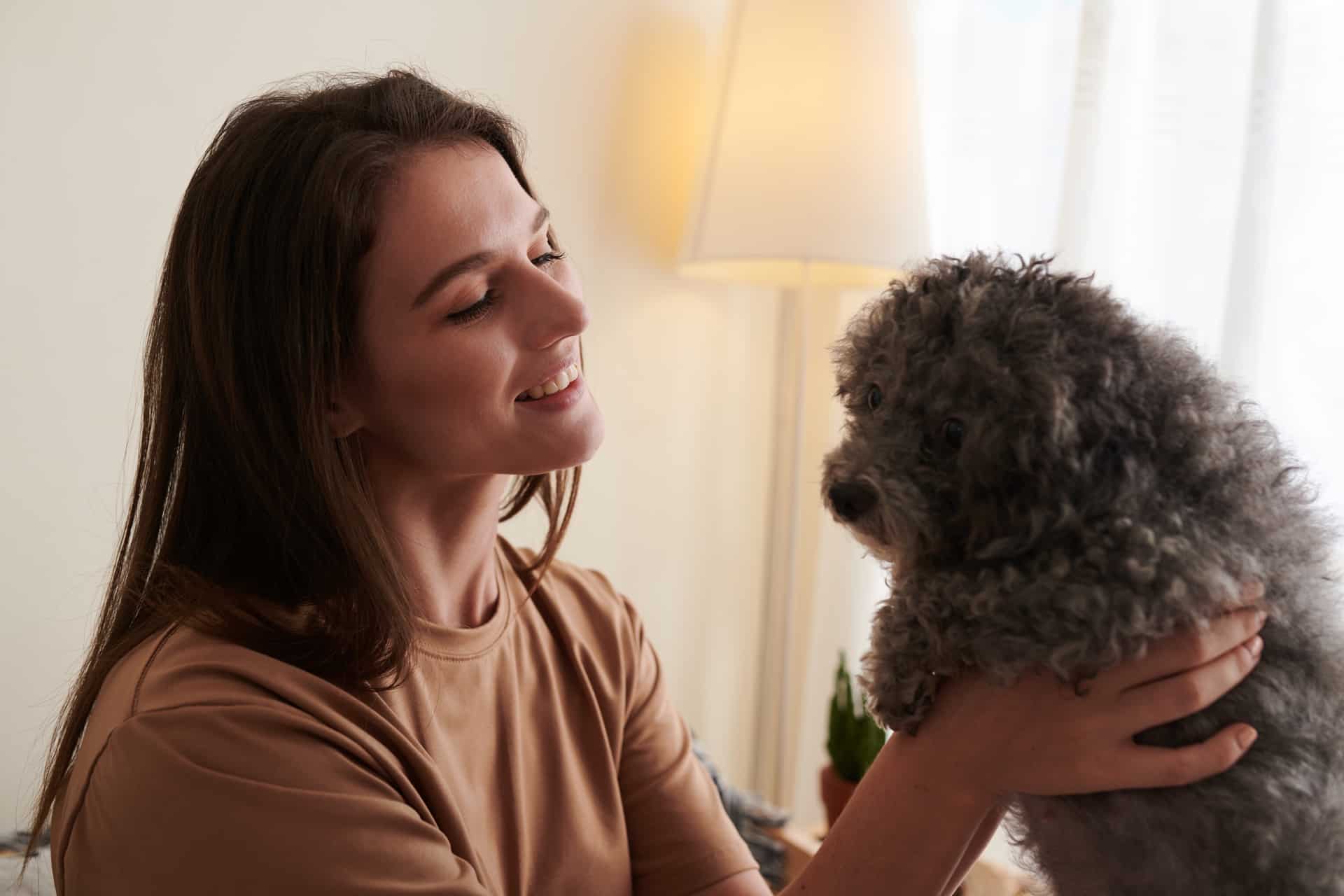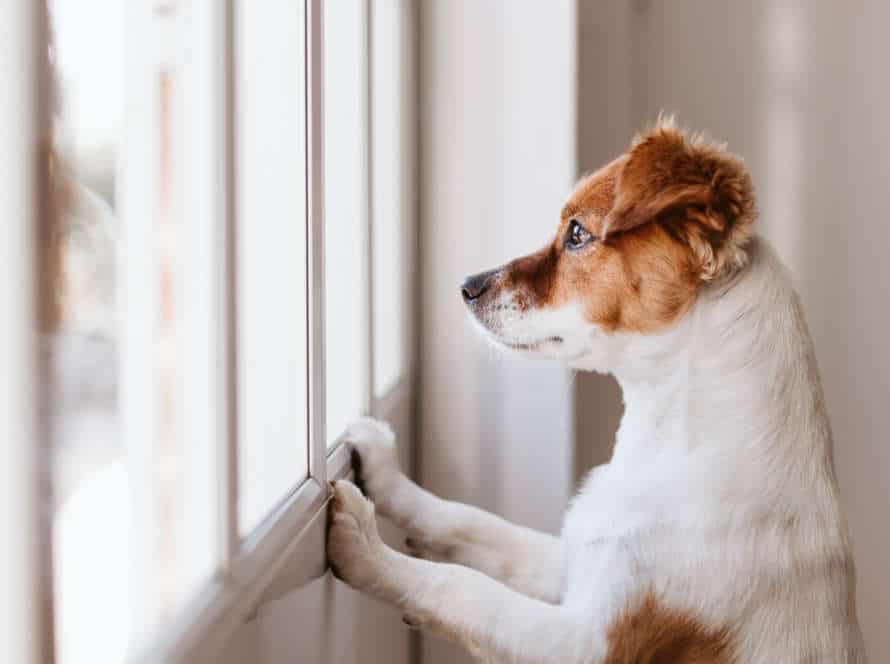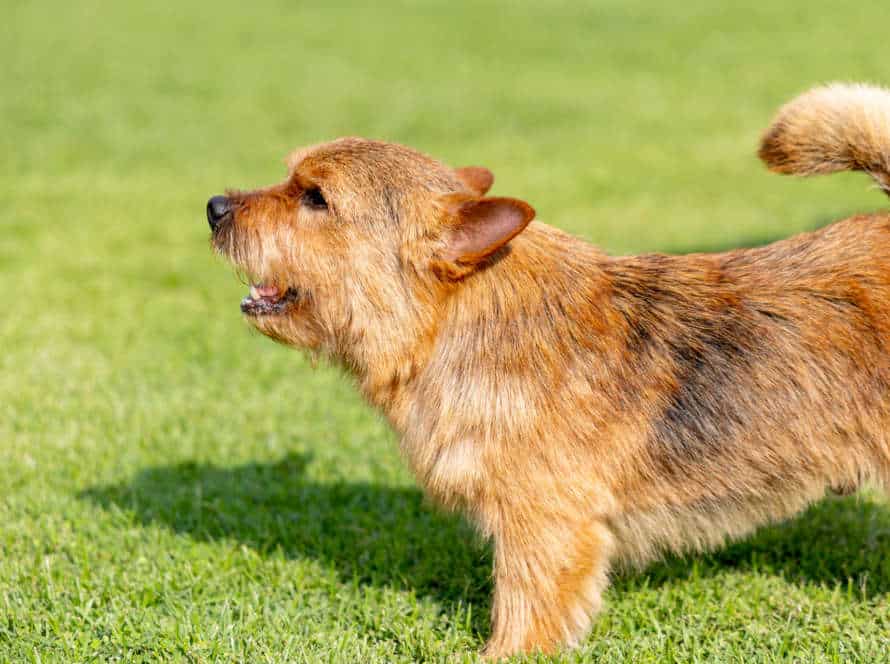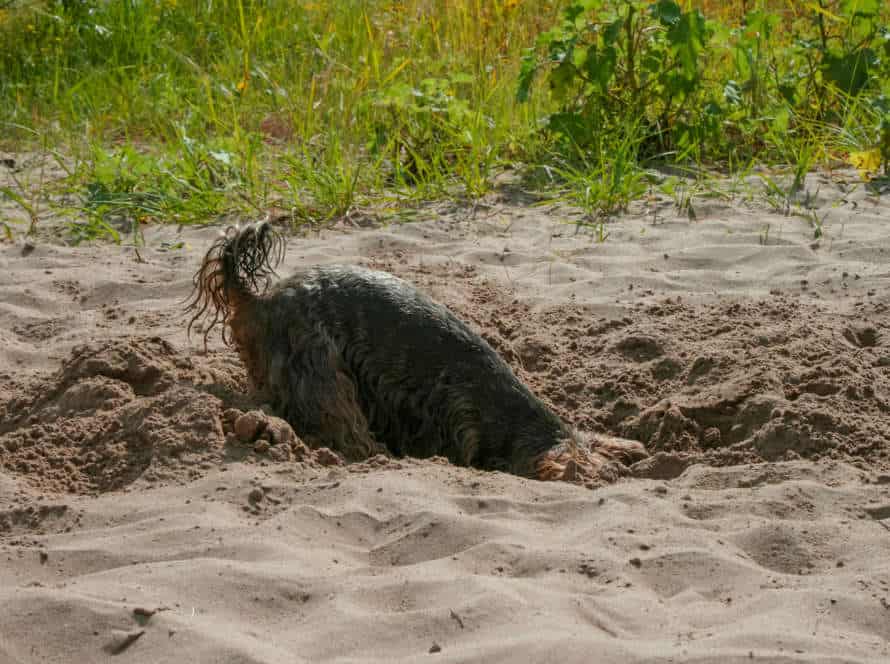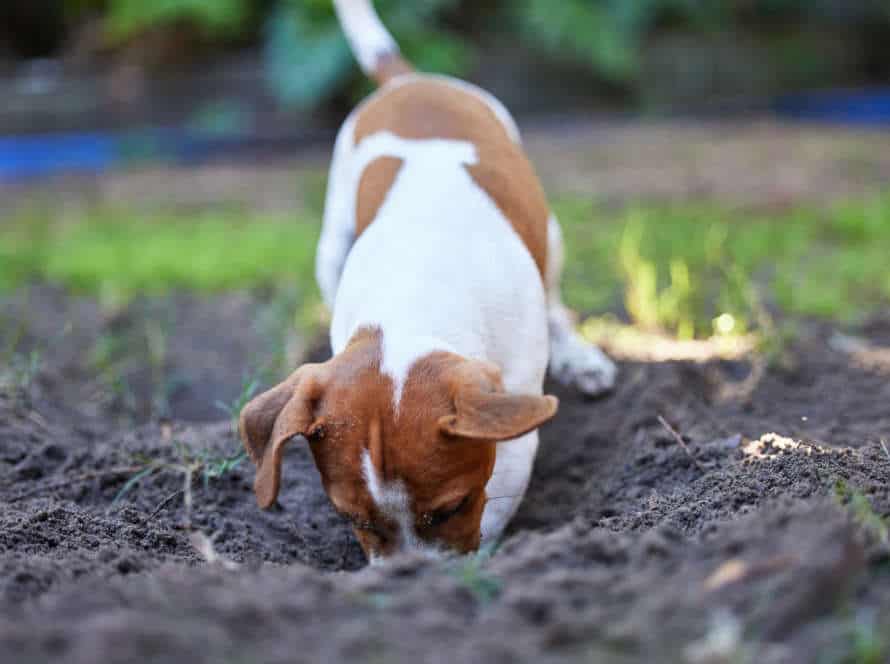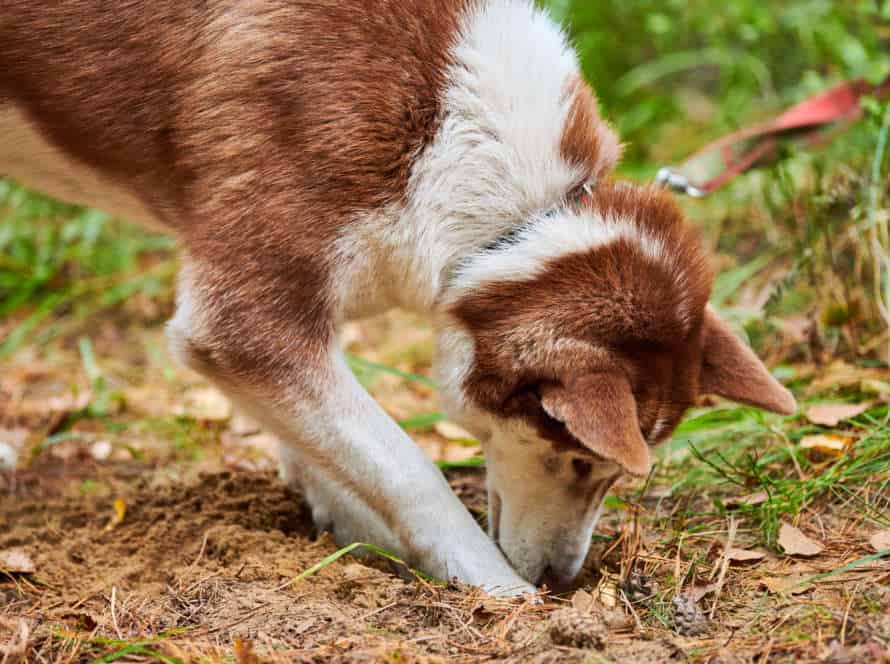Encouraging Independence in Your Dog from Day One
It’s essential to promote independence in your dog from the start. Here are some tips:
- Begin crate training early, so your pup has a tranquil place to relax in when they need time alone.
- Supply interactive toys and puzzles for your dog to play with solo.
- When walking, allow your dog to decide where to go and what to explore.
- Practice leaving them alone for short times and gradually lengthen the time apart.
By boosting their independence, your pup will be more confident and content even when you’re not with them.
Pro tip: Don’t forget to give your dog lots of love, exercise, and interaction – this way, they stay connected to you despite their newfound independence.
Teach your dog to be alone
Teaching your pup independence is key for positive dog ownership. Help them be comfortable when alone, so they can grow into a secure and happy pup! Here are some tips to get started right away:
- Encourage independence in your pup from day one!
Start with a few seconds and gradually increase time apart
Teaching your pup independence is essential for them to grow emotionally. Here’s how to do it from the start:
- Start by leaving your pooch for short times, just a few seconds. Then increase the time bit-by-bit.
- Train the “Stay” and “Come” commands to build trust and obedience.
- Reward your pup with treats and kind words after they listen.
- Get stimulating toys and puzzles to keep them busy while you’re not around.
- Don’t make a big deal of leaving or coming home; instead, keep it chill.
With a bit of practice, your dog will soon be comfortable with being alone for extended periods.
Pro tip: Try crate training them for extra safety and comfort.
Provide a safe and comfortable space for your dog
Creating a safe & comfy space for your pup is essential for their mental & physical health. Teaching them to be alone from day one will help avoid separation anxiety & promote healthy behaviour when away. Here are some tips:
- Designate a space like a crate or special room that they will feel secure in when alone.
- Get them used to being alone gradually – start with short periods & gradually increase the duration, rewarding them for good behaviour.
- Provide plenty of toys & chews to keep them busy & mentally stimulated.
- Practice leaving & returning home without making a big deal. This will help them learn that you leaving is normal & temporary.
- Don’t forget to always leave them with access to water & a safe place to go potty while you’re away.
Pro tip: Monitor your dog in their space initially to make sure they feel safe & comfy.
Do not give attention to your dog when leaving or arriving home
It may seem hard, but not giving attention to your pup when you come and go is key to teaching independence. This makes a routine and no over-dramatic leaving/arriving. A few tips:
- Start with short times away, then increase.
- Give the doggo a comfy, safe place to be alone.
- Provide toys/objects to keep them occupied.
- Reward good behavior with positive reinforcement.
- Ignore attention-seeking, like barking/whining when leaving – this just reinforces bad behavior.
- Be patient and consistent with training – then your pup will learn to be content when alone.
Encourage self-play
Start encouraging self-play in your pup right away! It builds confidence, helps them learn to solve problems, and stops destructive behavior due to boredom. But, pick the right toys and activities! Here are some tips to help you:
Provide access to interactive toys
Interactive toys? Great idea! They can help dogs play on their own and be more independent. Here’s a list of toys to try:
- Puzzle toys – A cognitive challenge that requires problem-solving. Can keep your pup occupied for hours!
- Treat-dispensing toys – Dispenses treats when your pup interacts with them. Reward for independent play.
- Chew toys – Durable chew toys help clean teeth. Plus, satisfy the urge to chew.
- Ball launchers – Let your pup play fetch without you. Keeps them entertained when you’re busy.
Be sure to choose the right toys for your pup’s age, size and chewing habits. Rotate the toys to prevent boredom. Pro Tip: Give your pup a safe and comfortable place to play. This will foster independence and security.
Incorporate puzzle toys into mealtime
Incorporating puzzle toys into mealtime is an awesome way to help your pup become independent from young. Puzzle toys offer physical and mental stimulation. Plus, they make mealtime way more fun for your furry friend! Here’s how to do it:
- Choose a puzzle toy that fits your pup’s size and skill level.
- Put a portion of their meal in the toy. Let them figure out how to get the food out.
- Gradually make it harder by adding more pieces or changing to a tougher toy.
Your pup will learn to pair mealtime with playtime. They’ll also learn problem-solving skills that they’ll use their whole life. Pro Tip: Supervise your pup while they play to ensure safety.
Reinforce independent play with positive reinforcement
Positive reinforcement, providing toys, and allowing them to explore their environment can help dogs foster independent play. Here’s how to use positive reinforcement to do so:
- Select toys your pup loves and offer them in rotation for fun and excitement.
- Give your pup safe and supervised access to different parts of your home – like a fenced-in backyard or playroom – to encourage exploration.
- Reward your pup with treats, verbal praise, and affection when they engage in independent play.
- Avoid interrupting during playtime as this can lead to needing constant attention. This encourages confidence, resilience, and problem-solving skills.
Pro Tip: Puzzle toys that dispense treats or food can strengthen independent play, as well as stimulate their mind and reduce boredom.
Promote autonomous decision-making
Once your pup arrives, it is essential to encourage independent decision-making from day one. Giving a particular set of rules and rewards, our puppies learn to trust and depend on us. But, they also become motivated to take independent actions.
By teaching your pup to make decisions alone, they will develop self-reliance and be better at tackling diverse scenarios. Let’s see how you can promote autonomous decision-making in your puppy.
Use clicker training to encourage decision-making
Clicker training is a great way to help dogs learn to make decisions. Here’s how you can use it:
- Select a basic behavior such as sitting or lying down.
- Train your dog to link the sound of the clicker with a treat or reward. Click the clicker and give your dog the treat.
- Once your pup has got the idea, use the clicker to signal when they make a good decision, for example laying down instead of jumping up.
- Click and reward them straight away to reinforce the behavior.
- With practice, your dog will learn to make similar decisions without a click or treat. This encourages independence and decision-making skills.
Offer choices to your dog to help them learn to make decisions
Offer choices to promote autonomous decision-making for your pup. This will help them avoid relying too much on you. Here are some tips:
- Start with small decisions, like which toy or treat.
- Gradually increase the complexity as they become familiar.
- Reward them with positive reinforcement to encourage further independent choices.
- Be sure not to present too many options, to avoid decision paralysis.
By doing this, your dog will gain independence and confidence.
Avoid making decisions for your dog
As dog owners, it’s important to promote autonomous decision-making. This can help build independence and self-confidence in your pet. Here are some ways to do this:
- Let your dog explore, without you around.
- Allow your pup to initiate play with other dogs.
- Give choices over food, toys and walks.
- Rather than punishing curiosity, redirect it.
- Enroll your pet in positive reinforcement classes.
This will benefit your pet’s physical and emotional health, and strengthen your bond.
Avoid helicopter parenting
Pet owners: beware of “helicopter parenting” your fur babies! Constantly supervising and intervening in their behaviour is unnecessary and can stunt their development. Want a more independent dog? Start by avoiding this parenting style and forming better habits ASAP.
Allow your dog to experience minor setbacks
As a dog owner, it is vital to let your pup experience small failings. This encourages independence and stops you from being a “helicopter parent”. Here’s how:
- On walks, give your dog the chance to explore, not keep them on a tight leash.
- Let them play with toys and figure out how to amuse themselves, without you having to do it.
- If they are safe, don’t intervene when they bark or whine; let them work it out.
- If they stumble or fall, don’t rush to pick them up – let them get up and keep going.
Learning to cope with minor setbacks will help build confidence and independence. It also makes them more adaptable in different scenarios.
Do not intervene unless safety is a concern
It is important to avoid helicopter parenting and promote independence for your dog’s long-term well-being and happiness. However, intervene when necessary for your pup’s safety.
These are times to intervene:
- If your pup is running into traffic or ingesting something harmful.
- If your pup is showing aggressive behavior.
- If your pup is showing signs of illness or injury.
Allow your pup to explore and make mistakes to promote independent behavior. Pro tip – Don’t be overly protective and trust their natural instincts to learn and grow!
Let your dog come to you for help if needed
As a dog owner, it’s tempting to be in control. However, you should help your pooch to be independent. Let your pet come to you for help. This encourages problem-solving. Plus, it boosts confidence and reduces behavior problems. Set up routines and boundaries from the start. Give toys and games that promote independent play. Keep an open line of communication. Watch your pet’s body language for signs that they need help. Providing autonomy sets your pup up for success. It also builds a healthy relationship between you and your furry friend.
Encourage exploration
Foster independence in your pup from the start by encouraging exploration! Once they come home, let them sniff and explore as much as they want. This way, they’ll gain confidence and feel more comfortable in their new environment.
Go new places with your dog
Venturing out with your pup can be an enjoyable experience for both of you. It’s important to encourage exploration from a young age. Here are a few tips to get started:
- Start small – Begin with a stroll around the neighbourhood or a tranquil park. Gradually increase difficulty.
- Have treats & toys – Bring along some of your pup’s beloved treats & toys to keep them occupied.
- Let them explore – Give your pup a chance to explore the area. Let them smell the flowers or a new smell.
- Stay safe – Keep your pup on a leash at all times. This keeps them and others safe.
With these tips, you and your pup can create long-lasting memories!
Pro Tip: Be aware of your surroundings & avoid exploration in places where it’s not permitted.
Allow your dog to sniff around and explore during walks
Letting your pup explore and sniff during walks is great for encouraging independence. Stimulating their senses can make for a healthier, happier pup.
Dogs use their sense of smell to learn about the world around them. So, let them take the lead when you go for walks. Don’t drag them along. Let them stop and sniff when they want to.
This can lead to a more independent and confident dog. Monitor their exploration and keep them on a leash when needed for safety.
Plus, sniffing around can help burn off extra energy. Resulting in a calmer and happier companion at home.
Provide opportunities for your dog to experience new sensory stimuli.
Provide your dog with new sensory experiences. This helps build their confidence, curiosity and keeps their mind active. Here are some ideas to do this:
- Take them to parks, beaches and hiking trails for new sights and smells.
- Introduce a range of toys with different sounds, textures and sizes.
- Offer treats with different tastes and textures.
- Include puzzles and brain games in their daily routine.
Remember to go slowly. Make sure they’re safe and rewarded for positive behaviour. Gradually increase the new stimuli as they become more confident.
Frequently Asked Questions
1. Why is it important to encourage independence in your dog?
Encouraging independence in your dog helps them become confident and less reliant on their owner. This can lead to better behavior and reduce separation anxiety.
2. How can I encourage independence in my dog?
Start by giving your dog space and letting them make decisions on their own. Gradually increase the amount of time that they spend alone and provide them with toys and activities to keep them entertained.
3. Is it okay to cuddle with my dog?
Yes, cuddling with your dog is perfectly fine. However, it’s important to also give them space and allow them to be on their own at times.
4. Will encouraging independence in my dog make them less obedient?
No, encouraging independence in your dog won’t necessarily make them less obedient. It can actually lead to better behavior overall as your dog becomes more confident and less anxious.
5. How can I prevent separation anxiety in my dog?
Encouraging independence in your dog from a young age can help prevent separation anxiety. It’s also important to gradually acclimate them to being alone and providing them with toys and activities to keep them occupied while you’re gone.
6. Can I still train my dog if I encourage independence?
Yes, you can still train your dog even if you encourage independence. Training can actually help build your dog’s confidence and establish your role as the leader in the relationship.

